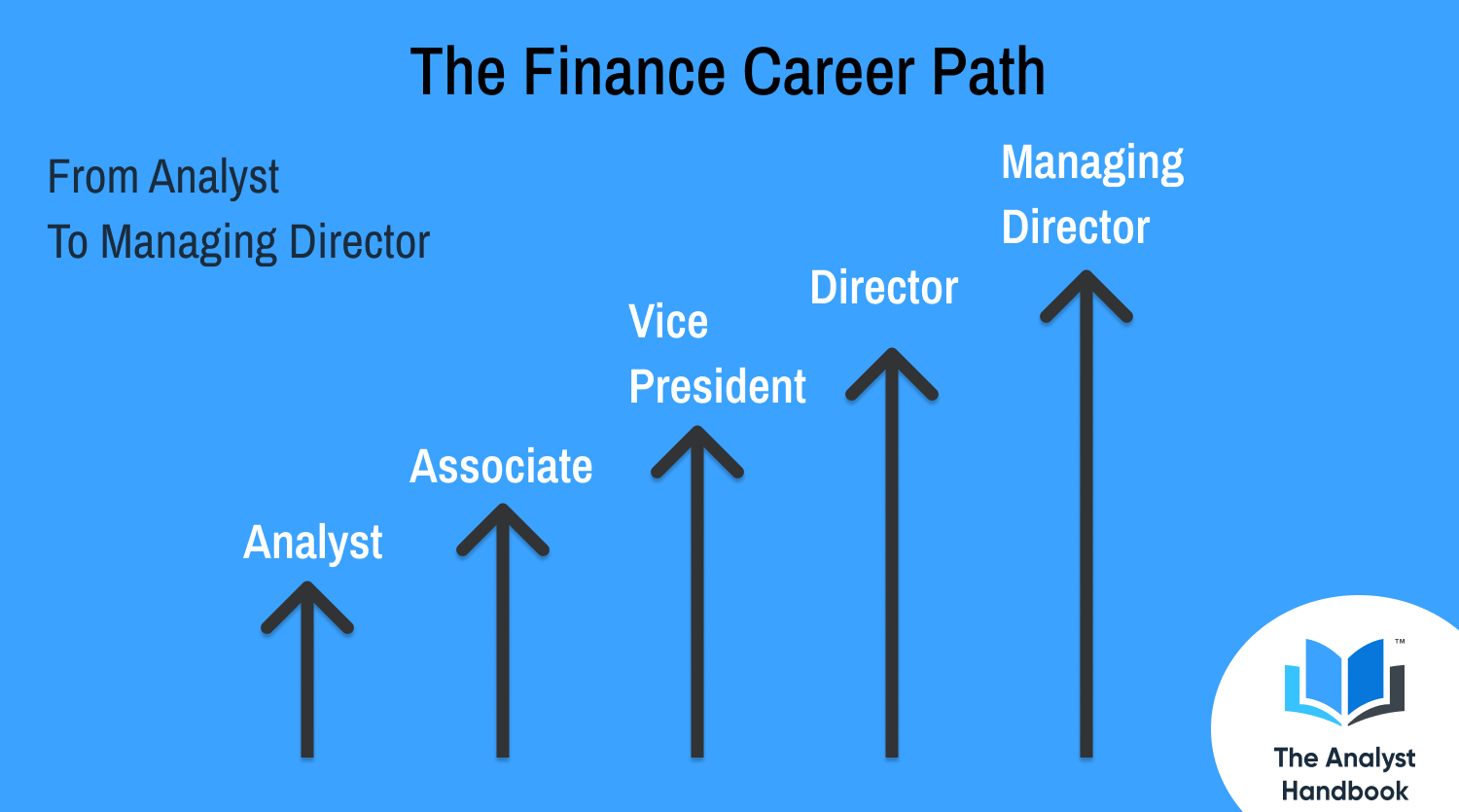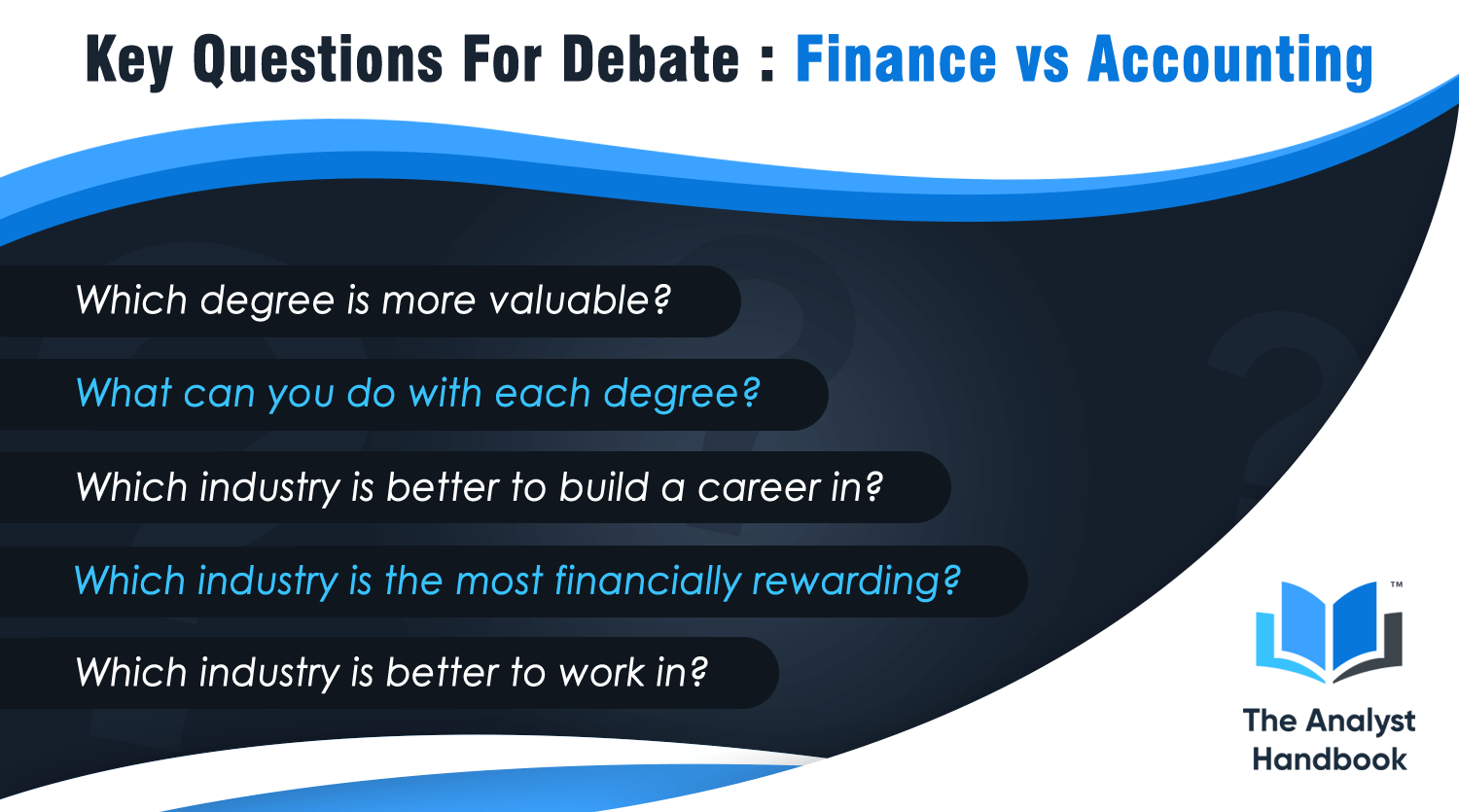The Finance Career Path typically begins with the Analyst position, works through to the Associate level, then into Vice President, then Director, and finally into Managing Director. Getting to the Managing Director position can take happen through a variety of routes, through different product lines, company’s, and teams.
The typical career trajectory follows the projection from Analyst to Managing Director over time, through experience, and acquiring more skills. As people move through the financial hierarchy, they learn how projects are done, the way deals are structured, and their progression.
The career hierarchy in Finance is similar to the career path in several other fields. The Entry-Level position is the one who is tasked with completing the necessary, yet tedious work. It’s the work that is essential to the rest of the company, or organization, that people would rather not do.
Each step plays an important role in the process of moving through the Finance career path. But first, before we go any further, let’s dive into the Entry-Level position, the Analyst position.
The Finance Career Path
The Analyst Position
The Analyst position is the entry-level position in Finance. Analysts are new entrants are tasked with learning what the company does, how to complete each task and what they need to do on a day-to-day basis. Analysts can be asked to complete a wide array of tasks, based on the projects they’re given, the deals they’re assigned to, and the transaction they’re closing.
First, Analysts are often tasked to research the deal or assignment in question, and gather any important information needed to complete a deal presentation, memorandum, or financial model. The type of research you do, the type of data you need to find, or the market intel you need to find, will depend on the field you’re in, the team you’re on, and the proejct you’re completing. Each category comes with different requirements for the type of information needed, necessary data to create a proposal, or market intelligence to create a financial model. It’s a pretty widespread task that allows Analysts and others to start building or creating the package of informaiton needed.
The package of information usually consists of a few things. First is the financial model or the financial analysis. The financial analysis will vary with industry, company, and transaction, but it is ultimately the financial model, projection, or evaluation of a particular deal, transaction, or company. The financial model is where you input the historical data or financial numbers, analyze or tweak information to run a projection, and evaluate whether a project makes sense financiallyt.
Next, is the investment, project, or transaction summary, most often called a memorandum or report. The transaction summary is where all the important information is gathered and condensed into one location. It’s typically a summary of the market the deal is in, the type of risks and mitigants, a summary of the financial analysis, to build a picture for the senior-level of the project or deal. Ultimately, the memorandum is often a deal or project summary, that condenses all of the information an Analyst has gathered, and put into one place.
The next task depends on the industry you’re in, and what your superiors need, which is the presentation or proposal. The presentation is different than the memorandum, in the sense that it is shared with the client. The memorandum is more of an internal document and one that stays within the company. The presentation on the other hand, is shared with the client, or the customer. It’s where you summarize the deal terms, the structure, the market research you’ve found, and the analysis as well. With certain industries that are pitching new clients to secure future deal flow, presentations are important to that process.
Here are a few more if you’re interested in learning more in depth, what financial analysts do.
The presentation is where you display what your company believes will happen, the type of financial returns, any opportunities seen within the marketplace. The Analyst does most of the heavy lifiting on the financial model, memorandum, and presentation, but the Assoicate does beging to come into play, once the Analyst has completed their first drafts.
The Associate Position
The Associate position is the next step in the finance career path and is a step-up from the Analyst position. Associates have a bit of experience, knowledge, and insight from the previous few years you’ve worked, and are able to begin to apply it further.
The Associate position is where you begin to use your experience and knowledge in order to help the company move deals, models, presentations, and data packages along further. Getting to this point usually takes around two years, and depends on the knowledge, experience, and results you’ve produced.
The Associate position is most often tasked to work above the Analysts, and in conjunction with the Analysts. They’re asked to help them craft the financial models, investment or project memos, and presentations. The Associates are there to make sure the Analyst is utilizing the right information, creating the correct calculations, and completing the work in the way senior-level members are looking for.
Through the experience they have, and the time they’ve spent as an Analyst, they’re able to understand what type of information is needed, what the senior-level team members are looking for, what they aren’t looking for, and how to craft the final result they want. They are ultimately the next line of defense in creating the presentations, memos, and models before it starts moving up the food chain.
The Analyst is tasked with doing the heavy lifting, inputting the data, finding the information, running the numbers, and starting from scratch, while the Associate is tasked with editing, tweaking, and adjusting the work and information the Analyst has created. Both the Analyst and Associate work together to create effective presentations, memos, and summaries as a team to keep a deal moving along.
The Vice President
The Vice President is the person on the deal team, or within the company who has anywhere from 5-10 years of experience. The VP is the person who is in charge of coordinating with the Analysts and Associates, while also playing a role in interfacing with the client. They are often the most junior members included in particular client-facing meetings and are the ones who act as the liaison between the Analyst and Associate, and the senior level members.
VPs are tasked with crafting the deal information, presentation, or summary to match what the client is looking for, or what the senior-level members are looking to present. This means tweaking the financial model after speaking to the client, changing the deal structure or cap table after having a client meeting, or adding in a particular component of the deal into the presentation or memo.
They’re tasked with knowing the deal or project structure, implementing it into the materials, and how to properly do it. A lot of that information and knowledge comes from experience and first hand knowledge of working on similar types of deals and transactions. Without having that experience, it’s difficult to truly understand how to correctly structure the deal, the different methodology behind certain calculations or formulas in the model, and the type of costs that accompany a particular structure, in order to see what those effects are to the bottom line.
The Vice President plays an important role because they are using their experience as an Analyst or Associate, to help structure the deal, facilitate the deal materials, and also coordinate or interface with senior-level members, or client representatives. They are the ones who are responsible to produce the packages they need, and the correct information needed to move forward. Without them, the senior-level team members would have to interface with the Analyst and Associate, to work on crafting the right deal package or deal materials.
The Director
The next phase of the finance career path, is the Director within a group or team, is usually someone who has 10+ years of experience, and has been able to work through the years of Analyst, Associate, and Vice President. Directors are typically looking to build up their knowledge, information, relationships, and experience to be able to be a Managing Director one day.
Directors are typically the most senior level person who isn’t leading or directing a team and plays a big role in working with the Managing Director interfacing with clients, bringing in deals, sourcing transactions, or finding new projects for their teams to work on. They are working with the MD to find interested parties, coordinate pitches, or generate new leads for their teams to present to utilizing past transactions, past experience, and their network to do so. The Directors play a big role in interfacing with clients and coordinating the different information or data needed to create the deal materials or proposal.
Directors are the ones who perform a lot of the actions and tasks of a Managing Director but aren’t there just yet. They are in the meetings with clients and the Managing Director, working to help the Managing Director find more deals, , and on the lookout for new companies to pitch, in order to build the company’s deal pipeline. They use their knowledge, experience, and information to help the Managing Director do their job to the best of their abilities. Helping to facilitate the deal structure, any important information, and what might produce the best end result. They are essentially second in command and work underneath head honcho the Managing Director, to keep deals moving along, keep them coming in, and continue closing them.
The Managing Director
The Managing Director or MD, is the person leading the group or team with roughly 15-20+ years of experience. They are finding deals, working their relationships, and managing clients to keep the rest of the team busy, and working.
They use their relationships, connections, and work they’ve done to build the team’s deal pipeline. Through them, company’s are able to make money, gain generate experience, and get handsomely rewarded for the work they do.
A lot of what they’re doing is about sourcing deals, and bringing in deals. Whether that means finding new clients, building more relationships, or pitching new leads, they are the ones leading the team.
Often times the group is based on the knowledge or experience they have in a particular field or space, the relationships or connections they’ve made, and the type of projects or deals they’ve done. They are the ones who are catering to clients, trying to find more opportunities to pitch and work to close each deal. They are the salesman for the company and the salesman for the team. Without MDs bringing in deals, or closing deals, the rest of the company isn’t able to gain the type of experience they’re looking for, generate the type of income they want, or work their way up the ladder they’re trying to climb.
Conclusion
The Career Path in Finance often follows this type of progression, along with these types of titles. These typically apply to a wide array of areas in finance, like investment banking, real estate, and private equity as well. Analysts are typically the entry-level position, tasked with finding the data, gathering the information, building the model, and creating the first draft of the presentations, memorandums, and financial models. Then, as the work begins to take shape, the Associate helps to craft the work, and shape it to the way the senior team members are looking for, or how it should be.
From there, Vice Presidents are the ones who coordinate with the Analysts and Associates on behalf of the senior-level team members. They help structure the deal, catch any mistakes, or better create the type of deal materials the senior level executives or clients are looking for. The Directors are often the ones who work with clients to create the deal structure, the framework for a how deal should look, interact with clients, and help the Managing Director to find more deals, source new business, and generate more leads.
The Managing Director is the person who is tasked with leading the group or team who is bringing in deals, using their Rolodex and relationships to find new projects to work on, and continuing the flow of leads coming into the company. The MD is the one responsible for keeping deals closing, business strong, and deals on the horizon. Each person of the equation plays an important role in the way deals process and connects with the person above them in the food chain.
Building a career in finance typically runs through these stages in one form or another. Each company or team might have titles or progression, but the responsibilities and tasks are typically similar in their regard. All in all, building a career in finance takes time, hard work, energy, and investment to get where you want to go, and to work on the type of tasks you want to complete.











